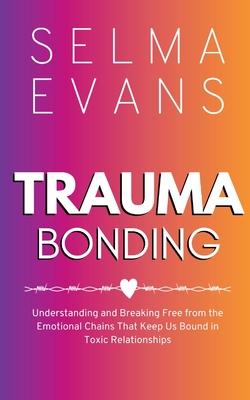Do you often feel undeserving of love, insignificant and worthless?
Do you struggle in your relationship but cannot imagine life without your partner?
Deep down, do you know that you deserve better, but find it impossible to leave your partner? Does your partner frequently hurt you, then apologise, leaving you feeling overwhelmed and bewildered?
The intricate and frequently puzzling response to these inquiries can be encapsulated in a simple phrase: Trauma Bonding.
A prevalent instance is domestic abuse victims: a person might form a deep emotional connection with the abusive partner due to the recurring pattern of maltreatment and intervals of affection or regret.
Do you often think about your relationship in these ways?
"It is my fault - I make them angry."
"She is under a lot of stress at work; she cannot help it. She will make it up to me later."
"He is only like this because he loves me so much - you would not understand."
"I will not leave him; he is my soulmate. You are just jealous."
Trauma bonding with a narcissist can be draining for even the most mentally healthy individuals. But why does it happen? The bond forms from our basic human need for attachment as a survival mechanism.
From there, abuse victims may become dependent on their abuser. Add in a cycle where the abuser repeatedly promises not to be abusive again and gains the victim's trust, and you have a complex emotional situation that affects even seemingly emotionally strong people.
Trauma bonding is a nightmarish prison. Ending the relationship may cause the toxic bond to make you want to plead for your partner's return.
This book specifically aims to help you:
- Identify the dangerous stages of Trauma Bonding.
- Understand when and why Trauma Bonding occurs (within families, friends, or peers).
- Dissolve toxic bonds in romantic relationships.
- Recognise factors that strengthen Trauma Bonds.
- Utilise tools and exercises to break Trauma Bonds.
- Develop a safe exit plan.
- Heal from a Trauma Bond.
Attachment and dependence can create a Trauma Bond, as can an ongoing pattern of abuse and remorse. This cycle can continue indefinitely if not interrupted.
This book is designed with YOU in mind, allowing you to progress at your own pace.
By following a step-by-step approach, this book will guide you out of the emotional trap that you are in by identifying typical behaviours of victims and their tormentors and applying techniques to break these patterns.
If you have formed a traumatic bond with someone, there is no need to feel ashamed. Our brains naturally search for survival strategies.
This manual will walk you through each step, helping you break free from the combination of abuse and positive reinforcement that keeps you trapped in guilt, anxiety, and emotional pain.
